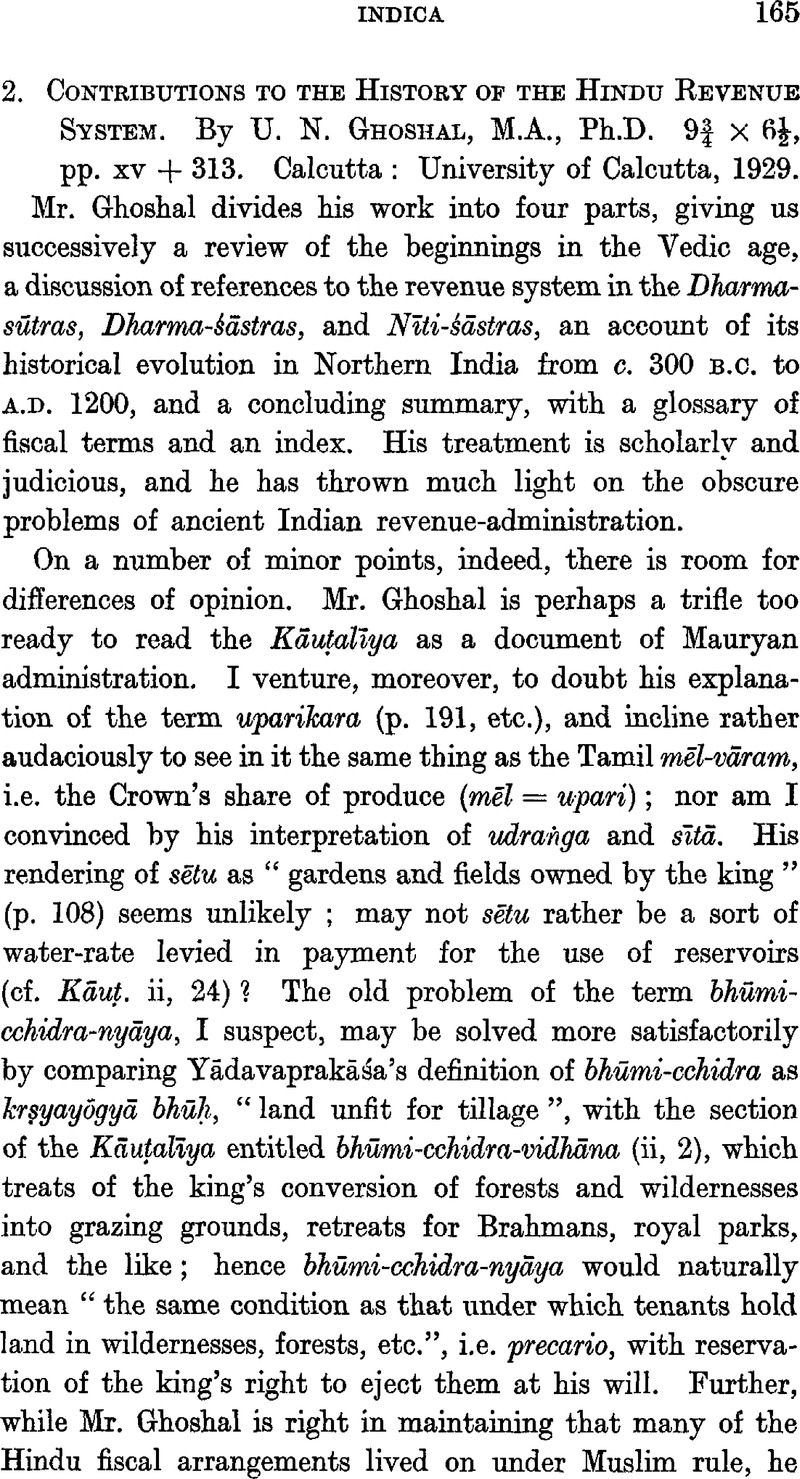No CrossRef data available.
Published online by Cambridge University Press: 15 March 2011

page 166 note 1 It may be added that the term kulyāṇadharta (pp. 245 f., 261, etc.) may on the analogy of Southern inscriptions be explained as denoting the marriage-tax. The translation of kṣāra as “ sugar “ (p. 90) also seems to be an error, while ”quid pro quid”(p. 138) is very unhappy, and “Chālukya” (p. 257 f.) ia a mistake for “Chaulukya“.
page 166 note 2 Diodorus is also misunderstood by Messrs. Monahan and Ghoshal; the true meaning of his statement is very skilfully explained by Dr. Breloer in his Grundeigentum in Indien, a work which throws some valuable light on the subject.